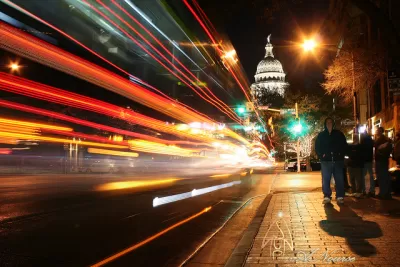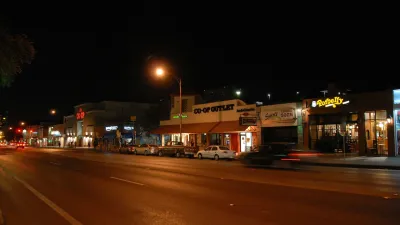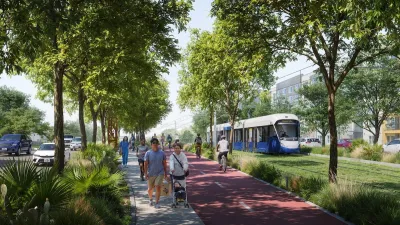The city's ambitious transit plan will bring light rail and bus connections to more areas of the city.

Tina Bellon reports on Austin's efforts to build out their transit system and the questions surrounding potential ridership. The city plans to spend close to $20 billion on infrastructure that includes a $7.1 billion project that would connect the north, south, and east parts of the city by light rail and significantly expand bus routes. With a more reliable and comprehensive system in place, city officials hope more people will choose transit over cars to reduce traffic and pollution in the increasingly congested city.
But skeptics like Gerald Daugherty, a former Republican commissioner in Travis County, argue that Austinites won't give up their cars that easily, with only 4 percent of residents using public transit before the pandemic. Daugherty supports road-based solutions such as clean vehicles and dedicated bus lanes, in addition to road expansion like the controversial I-35 project.
Austin is also revising its zoning and land use code to encourage denser development and increase housing supply near employment and transit centers.
FULL STORY: Car-centric Austin is building transit. Will anyone ride it?

Maui's Vacation Rental Debate Turns Ugly
Verbal attacks, misinformation campaigns and fistfights plague a high-stakes debate to convert thousands of vacation rentals into long-term housing.

Planetizen Federal Action Tracker
A weekly monitor of how Trump’s orders and actions are impacting planners and planning in America.

In Urban Planning, AI Prompting Could be the New Design Thinking
Creativity has long been key to great urban design. What if we see AI as our new creative partner?

King County Supportive Housing Program Offers Hope for Unhoused Residents
The county is taking a ‘Housing First’ approach that prioritizes getting people into housing, then offering wraparound supportive services.

Researchers Use AI to Get Clearer Picture of US Housing
Analysts are using artificial intelligence to supercharge their research by allowing them to comb through data faster. Though these AI tools can be error prone, they save time and housing researchers are optimistic about the future.

Making Shared Micromobility More Inclusive
Cities and shared mobility system operators can do more to include people with disabilities in planning and operations, per a new report.
Urban Design for Planners 1: Software Tools
This six-course series explores essential urban design concepts using open source software and equips planners with the tools they need to participate fully in the urban design process.
Planning for Universal Design
Learn the tools for implementing Universal Design in planning regulations.
planning NEXT
Appalachian Highlands Housing Partners
Mpact (founded as Rail~Volution)
City of Camden Redevelopment Agency
City of Astoria
City of Portland
City of Laramie





























